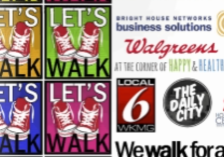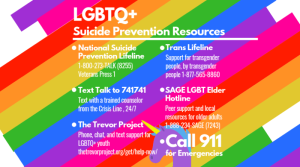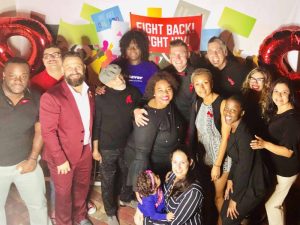From SOCIAL to PHYSICAL Distance
SARS-CoV-2 (SARS-2), the virus that causes COVID-19, spreads from person to person through respiratory droplets produced from an infected person, even if that person does not know he/she is already infected. Most transmissions occur during very close contact with an infected person or when an infected person coughs or sneezes around you. A six-feet parameter between you and others is a safe distance. Outside our home and perhaps work, this is what we mean when we use the term social distancing.
Social Versus Physical Distance?
We may not have control of our household members when they are outside our home environment, and they potentially can also get infected. It only takes one person to bring the infection home! What we call “social distance” may need to apply in our home setting and with our coworkers, so it is time to instead call it “PHYSICAL distance”. This distance includes, for example, kids playing with others in a playground, friends and visiting relatives, even anyone entering your home (ex: a service person).
Social Versus Physical Distance?
Another way of transmission, which accounts for a significantly lower number of infections, is by contact with fomites. A fomite is any contaminated surface, material, or object that others could have infected. Your personal items, such as your cell phone and keys, even during normal circumstances frequently become fomites, from either your germs, or when you place them over a contaminated surface, or if you touch a contaminated surface before grabbing them. Cell phones are worse because we put them in direct contact with our face. In all these instances, the infection will occur not because the object was contaminated, but because you or someone else touched it, and then you or someone else, touched your face. This fact is why the message of “washing your hands” becomes critically important.
Fomites?
Another way of transmission, which accounts for a significantly lower number of infections, is by contact with fomites. A fomite is any contaminated surface, material, or object that others could have infected. Your personal items, such as your cell phone and keys, even during normal circumstances frequently become fomites, from either your germs, or when you place them over a contaminated surface, or if you touch a contaminated surface before grabbing them. Cell phones are worse because we put them in direct contact with our face. In all these instances, the infection will occur not because the object was contaminated, but because you or someone else touched it, and then you or someone else, touched your face. This fact is why the message of “washing your hands” becomes critically important.
Pets?
What about our dogs? Dogs cannot get the COVID-19, and because they are living creatures, we do not refer to them as “fomites” but as “vectors”. Vectors are intermediary living carriers of pathogens, in this case, contaminated droplets on their surface. If you walk the dog outside: (1) do not let anyone touch your dog, and (2) if your dog was in a potentially contaminated environment, consider giving them a quick bath. Avoid putting alcohol or chlorine solutions on your pets. Cats are much less likely to be an efficient vector for this virus, not only because they tend to avoid unfamiliar people, but they also sanitize themselves by constantly licking their fur and paws. No need to talk about other animals, and no, in the case of this coronavirus, you do not have to worry about birds or insects!

Cleaning versus Disinfecting?
There are three ways we can get rid of the potentially infected virus that someone or something may have on them: (1) using a barrier and discarding it, (2) using a disinfectant, or (3) washing the contaminated area off.
1. Using a Barrier and Discarding It
Using a barrier is a material that may protect your body from getting sprayed or exposed to anything potentially contaminated around you. These barriers may range from our clothing to other more sophisticated personal protective equipment, or PPE, such as gloves, face masks, eye shields, disposable gowns, etc.
Sometimes when misused, face masks can be detrimental and provide a false sense of protection. Currently, there is a shortage of PPE much needed for our medical staff. Please, if you stocked up with these PPE, offer them to a local hospital for the protection of the medical team that will assist the needed ones.
2. Using a Disinfectant
Disinfectants have the function of sanitizing or eliminating a significant proportion of infected particles, but we are unlikely to remove them all. The small amounts that may remain behind are unlikely sufficient to cause an infection. Sterilization, on the other hand, is killing all potential particles in fomites. That requires a more invasive technique, and it is not needed in our home or outside a medical setting. Disinfectants come in different forms, from light exposure, such as direct sunlight, sprays, and other topical solutions. Fomites are less likely to be as infectious, the longer they are exposed to direct sunlight. Sunlight does not appear to be a practical way otherwise to prevent infection among humans.
Qualified sanitizers, which impair the ability of this virus to become infectious, usually are available solutions mostly with alcohol, chlorine, and other antibacterial and antiviral products. For direct contact on our skin, we should use approved safe sanitizers, which usually consist of 60% to 70% alcohol mixed with several ingredients that make it suitable to apply on our skin and to evaporate quickly. If you use a sanitizer on your hands, do not wipe it off with a dry cloth or paper towel. Instead, allow it to dry by itself.
Sanitizers are available in spray forms, which are especially helpful to decontaminate surfaces or fomites. A commercially available brand is Lysol spray, which contains a combination of alcohol and ammonia. There are also a variety of disinfecting wipes, but not all of them are effective! A popular brand is Clorox wipes which, as opposed to its name, do not contain bleach, but rather ammonium and alcohol.
Disinfectant with bleach or ammonium is usually not used on living surfaces. In fact, if we have those ingredients, we should avoid not mixing them. Individually, they can be used on most surfaces, not on our hands or pets! Spray the potentially contaminated surface and, if possible, do not wipe it immediately, waiting at least a minute or so. The more time the sanitizer is in direct contact with the surface, the better.
3. Washing or Cleaning Your Hands and Surfaces
Our hands are the most common transport to infect ourselves. When we wash our hands for 20 seconds with soap and running water we are cleaning our hands, not literally sanitizing them. Appropriately washing our hands is considered a safe way to “sanitize” them by scrubbing off infected organisms. We must dry them with a clean, unused towel, disposable paper towel, or venting them to air. In general, for living surfaces, we wash with soap and water, while we sanitize fomites. Sometimes it is prudent to do both.
What if I Can’t Get Sanitizer?
If you are not able to get sanitizer, you can consider making your own mixing the ingredients below in a 2 – 1 – 0.5 proportion.
- 2 units: rubbing alcohol 91% to 99%, usually isopropyl alcohol
- 1 unit: Aloe vera gel
- ½ – ¼ unit tea tree oil or lemon juice (optional)
Adding a teaspoon vitamin E oil and/or vegetable glycerin helps keep the skin hydrated without affecting the potency of the recipe.
There are reports of other essential oils that could have an antiviral activity such as anise, bark, bergamot, cinnamon, clary, clove, dill, eucalyptus, geranium, juniper, lavender, lemongrass, melissa, neroli, rose, rosemary, sage, and thyme. WARNINGS: (1) they are likely not effective when used by themselves, and (2) some people may be allergic to some of these things!

Mitigation Steps?
Proper mitigation steps we can all take to prevent the acquisition of COVID-19 are, for the most part, common-sense measures:
- Wash your hands.
- Do not touch your face in public.
- Disinfect the property you frequently carry (phones, keys, glasses, bags, etc.).
- Think of your immediate surrounding space as part of you, and keep it as clean as your hands.
- Avoid greeting others with your hands or a kiss/hug.
- Avoid directly touching public surfaces that may be potentially be contaminated with your hands.
- When you do so, disinfect your hands (soap and water or sanitizer).
- Exercise social distancing.
- Increase your personal space, when possible.
- Avoid crowds and large gatherings.
How can I keep my home free of contamination with the virus?
- Designate only one entrance for anyone to enter your home, ideally close to a sink.
- Put a sign on your door that everyone must take their shoes off (or if available, to wear shoe covers) before entering, AND to wash their hands immediately after entering your house.
- At the handwashing station, have available liquid soap and individual towels.
- Disinfect the property you frequently carry (phones, keys, glasses, bags, etc.).
- If you are coming from an environment potentially contaminated (in close contact with may people or a healthcare setting) consider placing a hamper near the entrance and do not proceed inside the house with contaminated clothing.
- When going to the supermarket or to a place where you might touching to may potential “fomites”, consider using gloves. If you do not have disposable gloves, you can use regular ones, but you must sanitize them after each use.
- Don’t forget about the risk of handling money currency. It is an excellent transport for many infectious organisms.
- Limits trips outside the house and the travelers. Consolidate trips among various people.
- These measures are as reasonable as their implementation from everyone in the household. It only takes one person to bring the infection home!
- Discard any bags and wraps soon after entering the house, and wash all produce!
Lastly, any person >65 years of age, especially if they have an underlying medical condition such as DM, respiratory, or cardiovascular disease should stay put, and isolated from the rest of the public. The older the age, the higher the risk! However, 20% of the US COVID-19 deaths were aged 20-64. Stay well informed, and do not lower your guard!
More Articles
Dr. DeJesus Recognized by Orlando Magazine
For the 5th consecutive year, Dr. DeJesus has been recognized by his peers in Orlando Magazine for his work as medical director at Orlando Immunology Center. Dr. DeJesus is a graduate from the University of Puerto Rico, School of Medicine. He completed his Internal Medicine training and Infectious Disease fellowship at the Medical College of…
Read MoreJoin OIC at the 2015 AIDS Walk Orlando
Orlando Immunology Center is pleased to announce that we will again be sponsoring a team at this year’s 2015 AIDS Walk Orlando. If you are interested in joining our team or donating to this worthwhile cause, please let us know. Saturday, March 28, 2015 In Florida, 15% of all new HIV infections reported among females…
Read MoreOIC Wins Wave Award for Favorite Local Healthcare Professional
The Orlando Immunology Center (OIC) announced today they have received the Central Florida/Orlando 2015 Watermark Awards for Variety and Excellence (WAVE) Award for favorite local healthcare professional. “We see this as a huge honor and will continue to do everything in our power to help patients from all walks of life be healthy, happy and…
Read More“Let’s Talk About PrEP” Video Goes ‘Viral’
The fun and educational video about HIV prevention goes viral in the best possible way Howard Brown Health is one of the largest LGBTQ health organizations in the country and they just released this new song and music video, “Let’s Talk About PrEP,” to continue raising the visibility of pre-exposure prophylaxis (PrEP) in the fight…
Read MoreWorld Suicide Prevention Day Orlando
World Suicide Prevention Day (WSPD), on 10 September, is organized by the International Association for Suicide Prevention (IASP). WHO has been co-sponsor of the day. The purpose of this day is to raise awareness around the globe that suicide can be prevented. If you, or someone you love, needs immediate assistance, please call 911. …
Read MoreDr. Edwin DeJesus on Best Doctors List by Orlando Magazine
Dr. DeJesus was recently voted “Best Doctors 2018” by Orlando Magazine for the 8th consecutive year! The Best Doctors in America® List includes the nation’s most respected specialists and outstanding primary care physicians in the nation. These are the doctors that other doctors recognize as the best doctors in their fields. They cannot pay a fee and are…
Read MoreCentral Florida HIV Planning Council’s First Open House
Come to Central Florida HIV Planning Council‘s first Open House! Everyone is welcome and a light lunch will be served. The event is at Heart of Florida United Way on Tuesday, January 15th, 2019 from 11am to 1pm. The Central Florida HIV Planning Council (CFHPC) is a community planning body. It’s responsible for HIV prevention and care for Central Florida’s…
Read MoreOIC Highlighted on 2018 Best Doctors List
OIC Highlighted on 2018 “Best Doctors List” in Orlando Magazine for the 8th consecutive year! The Best Doctors in America® List includes the nation’s most respected specialists and outstanding primary care physicians in the nation. These are the doctors that other doctors recognize as the best doctors in their fields. It is a list which is truly unbiased…
Read More5 Martin Luther King, Jr. Quotes to Inspire Better Healthcare
Dr. Martin Luther King, Jr. teachings transcend civil rights. He was a an extraordinary leader. His speeches and writings are some of the most impactful ever written. Here are 5 Martin Luther King, Jr. quotes to inspire better healthcare. We hope they empower you to live your best life and create healthy change in your community.…
Read MorePlanning Council-Ending HIV Together
The Central Florida HIV Planning Council business meeting is tonight January 30th, 2019. Where: Heart of Florida United Way, 1940 Traylor Blvd., Orlando, FL 32804 When: January 30th, 2019 Time: 5:30pm – 6pm light food, 6pm-8pm Business Meeting Everyone is welcome to join! It’s truly a community collaboration of people ending HIV together! You don’t need a medical degree, you…
Read MoreContinuing the NBHAAD Conversation
We are continuing the NBHAAD conversation and following up on our 2018 blockbuster Facebook Live Event. Last year for National Black HIV/AIDS Awareness Day (NBHAAD) we assembled powerhouses in HIV education, prevention, medical care and advocacy to discuss the most important issues facing the community. This year we are continuing the NBHAAD conversation because the…
Read MoreStay Healthy All Year – NBHAAD Health Resource Guide
Stay Healthy All Year with this NBHAAD Health Resource Guide. It’s Orlando’s ultimate 2019 NBHAAD health resource round up. On February 7th we marked National Black HIV/AIDS Awareness Day (NBHAAD) but one day is not enough for this important issue. So we created this quick reference guide with HIV facts, what you can do plus tons…
Read MoreFree Condom Locations in Orlando – International Condom Day 2019
These condoms are free because the protection they provide is priceless. Check out all the free condom locations in Orlando for International Condom Day (ICD) 2019! AIDS Healthcare Foundation (AHF) started ICD February 13, 2009. It’s an entire day to celebrate sex with condoms! You can greatly reduce the risk of STIs including HIV, HPV…
Read More











